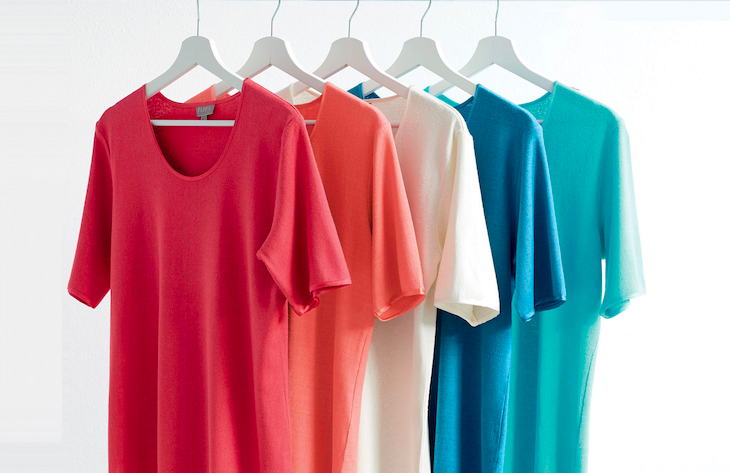How to successfully co-ordinate the colours of your clothing
Probably one of the decisions you have to make on a daily basis is choosing an outfit to wear. Selecting between your tops or shirts and trousers or skirts (your separates in a word) may seem easy; but how do you get on with colours? Knowing what colours suit you is important, but it is equally important to know how to match colours together so you can successfully combine separates into a cohesive outfit. Here the Patra team have all your questions answered, so read on to master colour-mixing!
When in doubt, go for monochrome
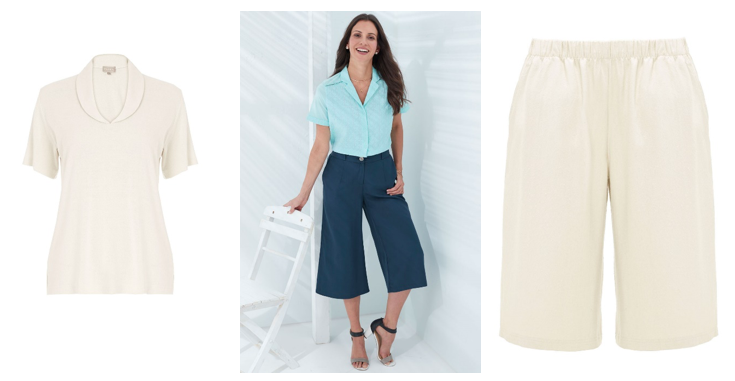
(Left to right) Pure Silk Roll Collar Top, Tencel Culottes and Cotton Shirt, Noil Silk Shorts
If just the idea of mixing colours gives you a serious headache, start with only one colour and make it completely yours! It might seem easy to wear the same shade for your entire outfit, however this is the hardest to pull off. You can start with classic neutrals, like greys, blues, whites or blacks and then move to pastels. The key is to keep it simple and fuss-free, while remaining consistent in your whole outfit, and you can achieve it by blending different shades of the same colour.
Wear neutral basics
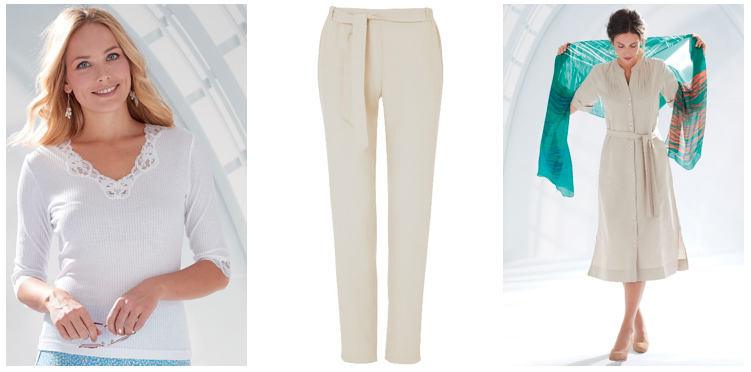
(Left to right) Bamboo Lacy Top, Noil Silk Tapered Trousers, Cotton Linen Dress
Beige, brown, grey, white and off-white are great colours and nice starters when you want to experiment with inserting colour in your outfit. They go well together and form a classy combination. Understated and elegant, you can definitely rock a minimal look and be confident that your neutral separates will work well with each other. Neutral colours are really your best-friends, as they mix easily and balance out an outfit. Just keep your accessories simple, and choose colours that work with your skin tone.
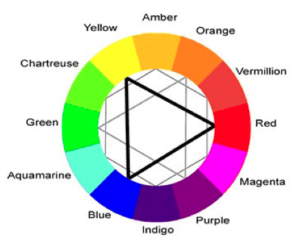 Mix contrasting colours
Mix contrasting colours
When selecting contrasting shades, a colour wheel can come in very handy. Used by many in creative fields; including fashion and interiors, the colour wheel can help you understand the relationship tones, hues and shades have with one another.
Just because colours are on the opposite of each other on the colour wheel doesn’t mean that they cannot work together. According to the colour wheel, there are primary colours, red, yellow and blue and secondary colours that are the primary colours combined. So, here we can find orange (as a mixture of red and yellow), purple (blue and red together) and green (yellow and blue). So, to go back to contrasting colours, red and green are for example contrasting colours as they are on the opposite side of the wheel, and same goes for yellow and purple and orange and blue. As far as choices go, this might seem bold and eye-catching, but the end result will be quite impressive.
If you do choose this colour-blocking technique, be sure to keep your accessories minimal, as this is a powerful combination as is. Nude shoes and understated jewellery will keep the balance with the rest of your outfit. You can experiment and see which contrasting colour combination will work for you the best.
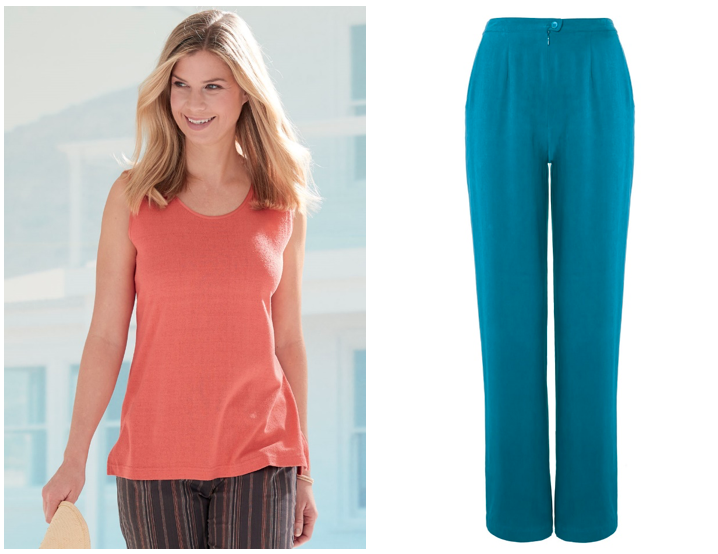
(Left to right) Pure Silk Sleeveless Top, Silk Trousers
Pastels
Nothing says spring and summer more than wearing pastels. From special occasions to office and casual wear, pastels are the perfect way to say hello to sunny weather. You can wear them together, for example by matching pastel pink and blue, or you can wear them with a neutral or the classic black or white. Still remember to keep the balance with the rest of your outfit, and don’t overdo it with your accessories. It’s always best to keep things simple after all.
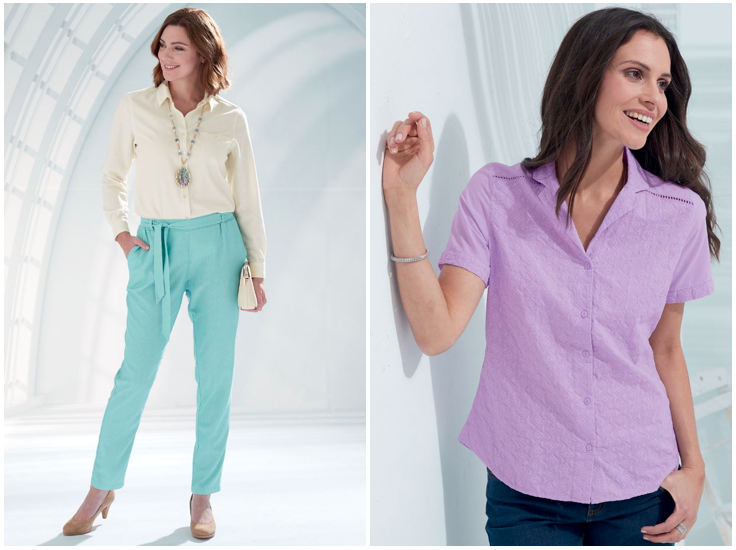
(Left to right) Noil Silk Tapered Trousers, Cotton Embroidered Shirt
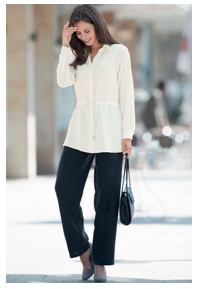 Classic black and white
Classic black and white
Black and white are your best friends as they are timeless – it really is a colour combination that will never seem to go out of style. From catwalks and red carpets to staple nine-to-five attire, black and white is the perfect mix! It might sound boring and uninspired, but truly how many times has a white shirt or top and a black pair of trousers saved the day? We are sure that everyone can attest to that! You can combine different textures or wear a solid colour with only accents of the other colour (just take notes of Reese Witherspoon’s 2011 Oscars black and white Armani dress!), the result will be as elegant and timeless as the colours themselves.
Prints
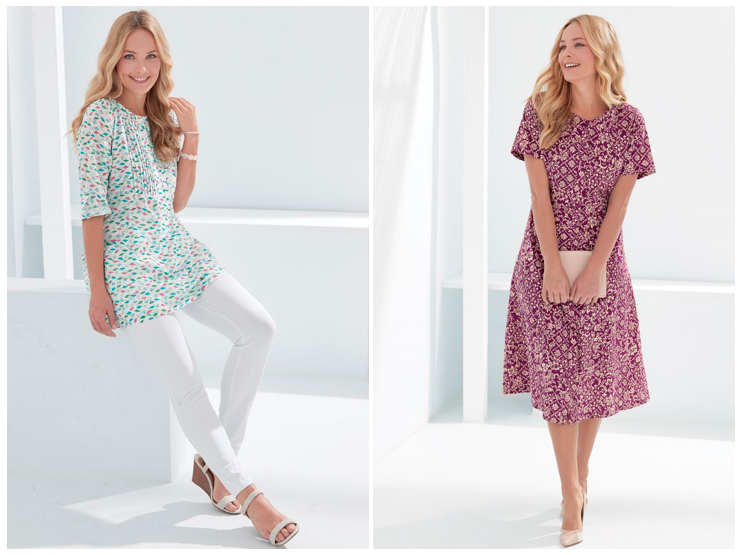
(Left to right) Cotton Voile Tunic Top, Pure Cotton Dress
If you want to get away from solid colours, then the answer is one; prints! Abstract, floral, geometric or animal, you can let the print speak for itself! If you choose a printed outfit, let the print take over. You don’t want your outfit to look busy and too much, so it’s always best to keep it to the minimum. Prints are a combination of one or more colours, so leave it at that and accessorise sparingly.
There are a lot of ways to mix and match colours, and you don’t have to be a fashion designer or stylist to create interesting combinations. Hopefully these suggestions have given you a better understanding of combining colours, so you can invest in some long-lasting separates that will work for you and coordinate perfectly with your existing wardrobe. Just choose whatever you feel comfortable in and let what you wear speak for itself! Good luck!

